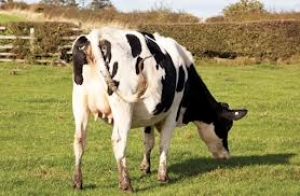Solution for farmers, Household
Targeting Improved Fertility Levels in Liquid Milk Herds

Speaking at the Teagasc National Liquid Milk Event in Wexford today, Wednesday 17 October, he said that calving interval on liquid milk farms in Ireland is 443 days and this is leading to many additional hidden costs on farms arising from lower milk yield, higher feed costs and a lower number of dairy replacements on the ground. The calving interval on the Teagasc Liquid Milk Research Herd in Johnstown Castle is 385 days.
The Teagasc Liquid milk event took place today at two locations, with an indoor conference in the morning in the Ferrycarrig Hotel, Wexford, followed by an outdoor farm walk on the Teagasc liquid milk research farm in Johnstown Castle. ‘Meeting the management challenges of a split calving system’ was the theme for the event.
Dr Joe Patton told the 150 farmers attending that they need to focus their breeding strategy on fertility when using both AI and stock bulls. He warned that it will take a long time, 8 to 10 years, to solve the fertility problems in high yielding herds. He advised that the worst performing 10 per cent of dairy cows in the herd, in terms of fertility performance, should be culled with no sentimentally. However he warned that culling alone will not solve the problem, without tackling the underlying causes and advised farmers to take a whole herd approach to tackling the issue.
He estimated that up to 40 per cent of cows are being recycled, or rolled over, from one calving period to the other on liquid milk farms due fertility problems and this is adding to costs of production. In the Johnstown Castle herd, cows are managed so they are given one chance to roll over from spring to autumn or autumn to spring, but if they slip again they are culled.
The conference also heard from Maggie Gould of Volac that replacements heifers are often the forgotten group of animals on farms. Yet they are the profitable dairy cows of the future. She stressed the importance of managing heifer calves, right from birth when adequate colostrum is required, through the growing stage so that heifers reach their target weight at mating. She said that the data shows a huge range of age at first calving, from 22 months to 30 months, pointing out that calving at more than 24 months, on average, will lead to increased cost.
Shane McElroy from Glanbia spoke about herd health being all about preventative medicine. He said that best practice in terms of biosecurity is to operate a closed herd policy. But if you must purchase stock then he advised farmers to find out the health history and current disease status of the individual animal and also of the herd the animals is coming from.





















